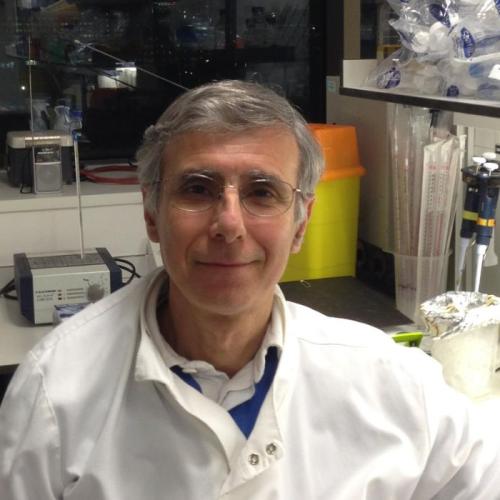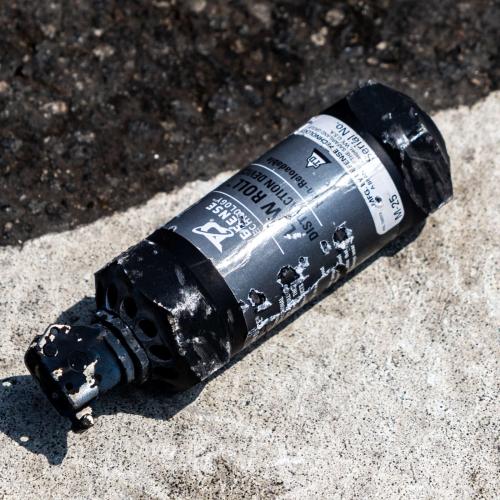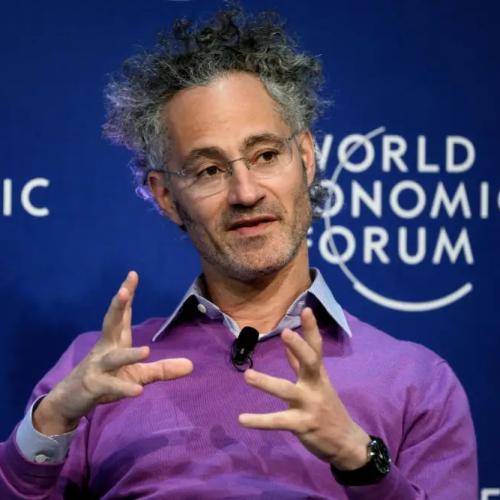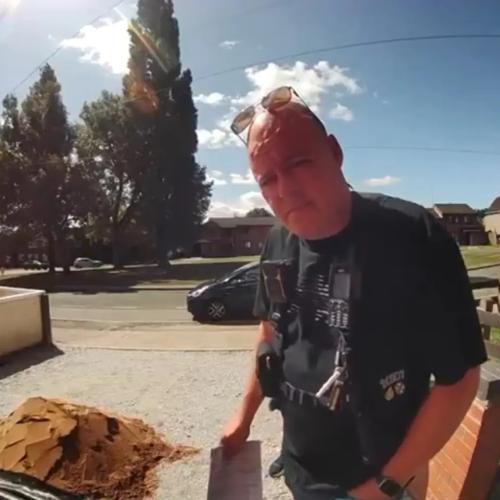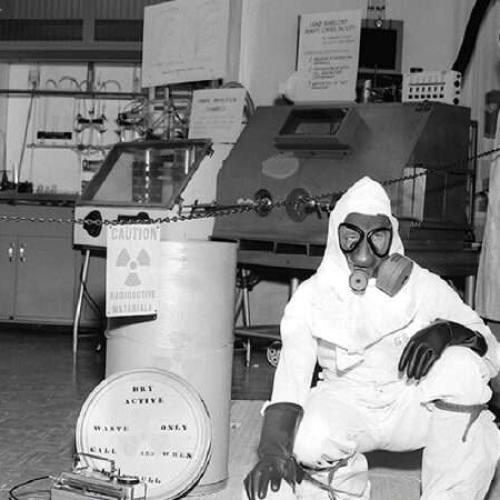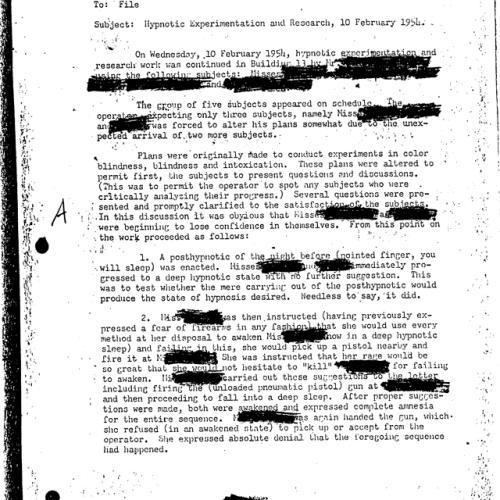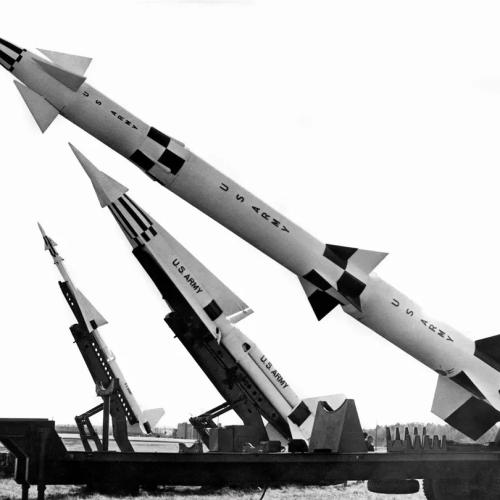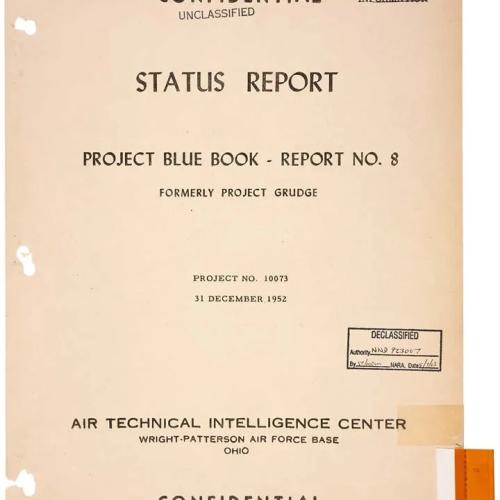Energy Inventions News Articles
Below are key excerpts of revealing news articles on energy inventions from reliable news media sources. If any link fails to function, a paywall blocks full access, or the article is no longer available, try these digital tools.
For further exploration, delve into our Energy Information Center.
A small British company has produced the first "petrol from air" using a revolutionary technology that promises to solve the energy crisis as well as to help curb global warming by removing carbon dioxide from the atmosphere. Air Fuel Synthesis in Stockton-on-Tees has produced five litres of petrol since August when it switched on a small refinery that manufactures gasoline from carbon dioxide and water vapour. The company hopes that within two years it will build a larger, commercial-scale plant capable of producing a ton of petrol a day. It also plans to produce green aviation fuel to make airline travel more carbon-neutral. "We've taken carbon dioxide from air and hydrogen from water and turned these elements into petrol," said Peter Harrison, the company's chief executive. "There's nobody else doing it in this country or indeed overseas as far as we know. It looks and smells like petrol but it's a much cleaner and clearer product than petrol derived from fossil oil," Mr Harrison told The Independent. Being able to capture carbon dioxide from the air, and effectively remove the principal industrial greenhouse gas resulting from the burning of fossil fuels such as oil and coal, has been the holy grail of the emerging green economy. Using the extracted carbon dioxide to make petrol that can be stored, transported and used as fuel for existing engines takes the idea one step further.
Note: For deeply revealing reports from reliable major media sources on new energy technologies, click here.
Egyptian Aisha Mustafa, 19, has dazzled the physics world with a new invention that could launch spacecraft off the Earth's surface and soaring through space without any fuel. Space is filled with a billowing sea of quantum particles that jump in and out of existence, and Aisha Mustafa proposes using thin silicon panels, spaced closely together, to trap these particles and then move against them, creating a propelling force. This innovation would make space exploration lighter, safer and cheaper. Mustafa still has some design work to do, but unfortunately her research is currently limited by lack of state funding for space science departments at the university level, though her school's science club did help fund her application for a patent.
Note: For more on this intriguing innovation, click here.
The founder of an apparel company has given the University of Missouri $5.5 million to study new sources of clean energy. Sidney Kimmel, founder and chairman of The Jones Group which includes brands such as Anne Klein, Nine West and Gloria Vanderbilt donated the money through his charitable foundation. The money will be used to create the Sidney Kimmel Institute for Nuclear Renaissance, SKINR, which will involve researchers from the MU Research Reactor and physics, engineering and chemistry departments. Mostly, MU scientists will be trying to figure out why excess heat has been observed when hydrogen or deuterium interacts with materials such as palladium, nickel or platinum under extreme conditions. Researchers dont know how the heat is created, nor can they duplicate the results on a consistent basis. Its a chance to turn cold confusion to real understanding and opportunity, said Rob Duncan, MUs vice chancellor for research. Since researchers Martin Fleischmann and Stanley Pons declared they had observed tabletop energy, scientists have been scrambling to re-create the phenomenon. Once dubbed cold fusion, some now refer to the process as a low-energy nuclear reaction. Some companies have even been trying to find marketplace applications for the excess heat, even though its not consistent. Duncan has called on the scientific community to stop trying to label the phenomenon before figuring out what causes it. The gift, he said, will let MUs research team focus on the pure science without being distracted by trying to find uses for it.
Note: The comment about scientists scrambling to reproduce the cold fusion research of Pons and Fleischmann is not quite the reality. The two scientists were slammed and ridiculed in a coordinated effort to suppress their amazing discoveries, which threatened the huge profits of the oil industry. For lots more reliable information on this, click here and here.
In the fight against maternal mortality in the developing world, a rugged, portable Solar Suitcase is providing reliable electricity to clinics in 17 countries where healthcare workers previously struggled to provide emergency obstetric care by the light of candles, flashlights and mobile phones. The Solar Suitcase powers medical LED lights, headlamps, mobile phones, computers and medical devices. Healthcare workers using the Solar Suitcase report greater facility and ease in conducting nighttime procedures. Improved lighting allows health workers to identify and treat complications such as obstetric lacerations and hemorrhage, nurses to locate and administer intravenous medication, and emergency Caesarean sections to be performed 24 hours a day. Solar-powered mobile phones allow on-call doctors to be alerted when obstetric emergencies require surgery. With augmentation, the solar suitcase powers blood bank refrigeration, permitting life-saving transfusions to occur without delay. An estimated 358,000 maternal deaths occur worldwide. Reducing childbirth deaths depends, in part, on providing adequate emergency obstetric care. However, a lack of health facility power translates to an inability to perform life-saving care.
Loyd Bryant used to pump manure from his 8,640 hogs into a fetid lagoon, where it raised an unholy stink and released methane and ammonia into the air. The tons of manure excreted daily couldn't be used as fertilizer because of high nitrogen content. The solution to Bryant's hog waste problem was right under his nose - in the manure itself. A new waste-processing system - essentially a small power plant - installed on his 154-acre farm uses bacteria to digest the waste and burns methane to produce electricity. It also converts toxic ammonia into forms of nitrogen that can be used as fertilizer for more profitable crops. Waste-to-energy systems have been around for at least 15 years. But Duke University, which helped develop and pay for Bryant's system, says this one is the cleanest in existence - and virtually the only one that tackles all of the environmental problems created by animal waste. The system was built with off-the-shelf parts and simple design plans that are free for the asking. It's poised to become the standard for a cleaner waste-to-energy model that brings together farmers, utilities and private companies in an environmentally friendly effort. Bryant saves money on electricity and gets a cleaner farm. Improved air quality in his hog barns also means his pigs will have lower mortality rates and convert feed more efficiently, fattening Bryant's profits.
Note: For reports from reliable sources on exciting new energy developments, click here.
New Zealand engineer John Fleming is part of an effort to bypass the hydrogen era and go directly to the nitrogen-hydrogen economy. Texas-based Fleming, 65, is responsible for a string of inventions that produced more efficient, cleaner-burning heating appliances and holds a number of patents. He ... is helping researchers at Texas Tech University look at the potential to power vehicles using liquid ammonia, produced by combining hydrogen and nitrogen. Fleming's most tangible contribution has been a small, cheap processing plant that converts hydrogen and nitrogen into ammonia using a compression and decompression system. It promises on-site production of hydrogen-carrying liquid fuel, solving the problem of storing and distributing (with considerable energy loss) a highly explosive gas from large and expensive centralised plants. "Ammonium can be liquefied, produces no carbon or solid deposits and can burn in internal combustion engines carrying a reasonable amount of hydrogen." Based on an electrolyser he devised for potential use in gas fireplaces, the processor offers huge cost savings in the production of hydrogen using electricity. The processor costs US$200 (compared with around $130,000 using large-scale conventional models) and is predicted to produce fuel for about US27c a litre [about $1.00/gallon] before taxes.
Note: For lots more on new energy inventions, click here.
Trees and algae have been turning CO2 into fuel since the dawn of time, unlocking the chemical energy within this molecule to power metabolic processes. With a little ingenuity, it is already possible to transform CO2 into anything from petrol to natural gas. Any conversion processes will take a lot of energy. The question is, can these processes be refined to ensure that less energy is used to create this fuel than is provided by it? The key challenge is to convert CO2 into carbon monoxide (CO), by removing one of its oxygen atoms. Once you have CO, the process of creating hydrocarbon fuels such as petrol is easy. It's achieved through a reaction known as the Fischer-Tropsch process most commonly used to synthesise liquid fuel from coal. But getting from CO2 to CO requires ... a lot of energy. The US Government's Sandia National Laboratories, in Albuquerque, New Mexico, have opted for ... a system that takes its energy source from concentrated solar power. As Green Futures goes to press, researchers from Bristol and Bath Universities in the UK have also announced plans for solar-powered CO2-to-fuel conversion.
Note: If plants are able to convert CO2 to energy and have been doing this for billions of years, why can't scientists figure out a way to do this for human use?
People are looking for ways to trim budgets and cut down on energy use. There's a product heating up in Utah that does just that. It even helps a good cause. Don't underestimate the power of cooking with the sun. LaRue Howells first bought a Global Sun Oven a year ago to be prepared for an emergency, but now she uses it a few times a week, all-year round and shares her knowledge with members of her church. Howells said, "I can grab the solar oven and some food and take off if I needed to, and it's wonderful to have." She baked bread for us. The temperature outside was in the low 40s. "We baked bread when it was 17 degrees outside," she said. "The temperature outside isn't the issue, it's the sun." To control the heat of the oven, you adjust the angle of the oven to the sun. If you want to reduce the heat, you angle it away from the sun. One-third of the Sun Ovens sold in the U.S. are sold in Utah. Joe Crane, with Kitchen Kneads, said, "Just being prepared, self-sufficient brings a lot of peace of mind to people." Crane started to sell them nearly a year ago. "Temperature makes no difference," he said. "I've cooked at 5 below to 90 degrees in the summer time." All you need is sun, and cook times aren't much longer than with a conventional oven. As useful as we might find them, Sun Ovens are life sustaining in developing countries looking for solutions to deforestation and energy deficiency. Domestic sales help pay for ovens in Afghanistan, Nepal and South Africa. They cost around $300. Sun Ovens [use] no electricity and [burn] no fuels, meaning no emissions.
Note: For more on this fascinating development, https://www.sunoven.com. See also http://solarcookers.org
Mater Dei High School finished first and third out of 33 high school and college student teams from North and South America, shattering the miles per gallon record set last year by Cal Poly San Luis Obispo. Mater Dei's "6th Gen" car won the traditional fuel combustion category in the Shell Eco-Marathon Americas with [a] run of 2,843.4 miles per gallon. Mater Dei's other car in competition, "5th Gen" finished third with a Friday run of 2,383.8 miles per gallon. Mater Dei wins $10,000 for first prize, along with an additional $2,400 for internal combustion engine awards. The Eco-Marathon Americas, which began in 2007, is a gathering of college and high school student teams trying to drive the farthest distance using the least amount of fuel. Collectively, it's an effort to change the way the world uses energy. Each team uses a hand-built, high-mileage prototype vehicle at the California Speedway from vehicle design to management to financing, the student teams managed their vehicles from start to finish. In addition to being eco-friendly, the competition is also about giving the students an opportunity to gain practical experience in science, math, business and design.
Note: Why wasn't this remarkable news covered by any major media other than this NBC affiliate? For another astonishing, yet little-known engine invention by high school students, click here. For more on the repression of new energy inventions, click here.
A powerful winter storm swept across northeastern Ohio in early January, knocking out power for nearly 60,000 customers. But in an isolated one-story building, tucked among the trees and fields of Cuyahoga Valley National Park, the lights stayed on. So did the computers. The power source: two fuel cells, each about the size of a refrigerator. "It worked seamlessly," said Tom Toledo, maintenance operations supervisor at the park. "We didn't even realize there was a power outage." The performance of these fuel cells, a demonstration project for fuel cell maker Acumentrics Corp. of Westwood, is an example of a technology whose time may be approaching. Unlike traditional technologies, which burn fuels like oil, coal, and natural gas to make power, fuel cells rely on chemical reactions to produce electricity and heat. Fuel cells are most frequently imagined as an advanced engine for automobiles. But as Acumentrics' success in Ohio demonstrates, on-site generation represents another application, one that specialists say will make it to market long before fuel cells replace the internal combustion engine. Acumentrics, in fact, is moving toward commercial production of a compact fuel cell system to power and heat homes. Working with the Italian heating products company Merloni TermoSanitari, Acumentrics hopes to get these household units, small enough to hang on a wall, into European markets by 2010. Estimated price: $5,200. "This is a new way of making electricity," said Gary Simon, Acumentrics chief executive. "It's like going from vacuum tubes to microchips." Acumentrics is one of about 40 Massachusetts firms developing fuel cell technology that someday may power everything from military outposts to cellphones.
Note: For many exciting reports of new energy inventions, click here.
An Erie cancer researcher has found a way to burn salt water, a novel invention that is being touted by one chemist as the "most remarkable" water science discovery in a century. John Kanzius happened upon the discovery accidentally when he tried to desalinate seawater with a radio-frequency generator he developed to treat cancer. He discovered that as long as the salt water was exposed to the radio frequencies it would burn. The discovery has scientists excited by the prospect of using salt water, the most abundant resource on earth, as a fuel. Rustum Roy, a Penn State University chemist, has held demonstrations at his State College lab to confirm his own observations. The radio frequencies act to weaken the bonds between the elements that make up salt water, releasing the hydrogen, Roy said. Once ignited, the hydrogen will burn as long as it is exposed to the frequencies, he said. The discovery is "the most remarkable in water science in 100 years," Roy said. "This is the most abundant element in the world. It is everywhere," Roy said. "Seeing it burn gives me the chills." Roy will meet this week with officials from the Department of Energy and the Department of Defense to try to obtain research funding. The scientists want to find out whether the energy output from the burning hydrogen - which reached a heat of more than 3,000 degrees Fahrenheit - would be enough to power a car or other heavy machinery. "We will get our ideas together and check this out and see where it leads," Roy said. "The potential is huge."
Note: For an exciting survey of major media reports of new energy inventions, click here.
Millions of inventions pass quietly through the U.S. patent office each year. Patent No. 7,033,406 did, too, until energy insiders spotted six words in the filing that sounded like a death knell for the internal combustion engine. An Austin-based startup called EEStor promised "technologies for replacement of electrochemical batteries," meaning a motorist could plug in a car for five minutes and drive 500 miles roundtrip between Dallas and Houston without gasoline. By contrast, some plug-in hybrids on the horizon would require motorists to charge their cars in a wall outlet overnight and promise only 50 miles of gasoline-free commute. And the popular hybrids on the road today still depend heavily on fossil fuels. "It's a paradigm shift," said Ian Clifford, chief executive of Toronto-based ZENN Motor Co., which has licensed EEStor's invention. "The Achilles' heel to the electric car industry has been energy storage. By all rights, this would make internal combustion engines unnecessary." Clifford's company bought rights to EEStor's technology in August 2005 and expects EEStor to start shipping the battery replacement later this year for use in ZENN Motor's short-range, low-speed vehicles. The technology could also help invigorate the renewable-energy sector by providing efficient, lightning-fast storage for solar power, or, on a small scale, a flash-charge for cell phones and laptops. EEStor's secret ingredient is a material sandwiched between thousands of wafer-thin metal sheets, like a series of foil-and-paper gum wrappers stacked on top of each other. Charged particles stick to the metal sheets and move quickly across EEStor's proprietary material. The result is an ultracapacitor, a battery-like device that stores and releases energy quickly.
Note: For many exciting articles about new, efficient and clean energy inventions, click here.
Algae seems a strange contender for the mantle of Worlds Next Great Fuel, but the green goop has several qualities in its favor. Algae, made up of simple aquatic organisms that capture light energy through photosynthesis, produces vegetable oil. Vegetable oil, in turn, can be transformed into biodiesel, which can be used to power just about any diesel engine. Algae has some important advantages over other oil-producing crops, like canola and soybeans. It can be grown in almost any enclosed space, it multiplies like gangbusters, and it requires very few inputs to flourishmainly just sunlight, water and carbon dioxide. Because algae has a high surface-area-to-volume ratio, it can absorb nutrients very quickly, [Jim] Sears says. Its small size is what makes it mighty. The proof is in the numbers. About 140 billion gallons of biodiesel would be needed every year to replace all petroleum-based transportation fuel in the U.S. It would take nearly three billion acres of fertile land to produce that amount with soybeans, and more than one billion acres to produce it with canola. Unfortunately, there are only 434 million acres of cropland in the entire country, and we probably want to reserve some of that to grow food. But because of its ability to propagate almost virally in a small space, algae could do the job in just 95 million acres of land. Whats more, it doesnt need fertile soil to thrive. It grows in ponds, bags or tanks that can be just as easily set up in the desertor next to a carbon-dioxide-spewing power plantas in the countrys breadbasket. Sears claims that these efficiencies will allow Solix Biofuels, the company he founded, to create algae-based biodiesel that costs about the same as gasoline.
Note: For many other innovative ideas to develop cheap, renewable energy sources, click here.
Retired TV station owner and broadcast engineer, John Kanzius, wasn't looking for an answer to the energy crisis. He was looking for a cure for cancer. Four years ago, inspiration struck in the middle of the night. Kanzius decided to try using radio waves to kill the cancer cells. His wife Marianne heard the noise and found her husband inventing a radio frequency generator with her pie pans. "I got up immediately, and thought he had lost it." Here are the basics of John's idea: Radio-waves will heat certain metals. Tiny bits of certain metal are injected into a cancer patient. Those nano-particals are attracted to the abnormalities of the cancer cells and ignore the healthy cells. The patient is then exposed to radio waves and only the bad cells heat up and die. But John also came across yet another extrordinary breakthrough. His machine could actually make saltwater burn. John Kanzius discovered that his radio frequency generator could release the oxygen and hydrogen from saltwater and create an incredibly intense flame. "If that was in a car cylinder you could see the amount of fire that would be in the cylinder." The APV Company Laboratory in Akron has checked out John's ... invention. They were amazed. "That could be a steam engine, a steam turbine. That could be a car engine if you wanted it to be." Imagine the possibilities. Saltwater as the ultimate clean fuel. A happy byproduct of one man searching for the cure for cancer.
Note: Though this exciting breakthrough was reported in dozens of local media, not one major news outlet found it worthy of mention. To verify this yourself, click here.
Off the western coast of Scotland, on the Isle of Islay, science teacher Ray Husthwaite turns on the light in his classroom. The electricity comes from a power cable that runs to the mainland. But it also comes from the ocean. A few miles from the school, wave action compresses and decompresses air in a chamber. The moving air powers a turbine, which generates electricity. "It is pleasant ... to sit beside the gray, concrete structure and listen to the rising and falling of the waves, driving air through the turbines like the breath of a great sea monster," Husthwaite said. "It seems insane to me to be investing in nuclear power stations and gas turbines when there are endless, free energy resources in the rivers, oceans and the wind." Ocean power gradually is joining the ranks of wind and solar power as a source of renewable energy. Islay's wave-power converter, the Limpet 500, has been operating since 2000. In Hawaii, the Navy has been churning up electrons with the help of a floating buoy. And in Portugal, engineers are installing snakelike tubes designed to convert the sea's motion into electricity. Some designs, like the Limpet, use waves to push air through a column. Others convert the sea's up-and-down motion into mechanical energy. One wave-power company executive told a congressional committee last year that several hundred square miles off the California coast could supply the electrical needs of all of the homes in the state.
Note: To learn about an abundance of other new energy technologies which could replace oil, click here.
The home and office of Kyle Foggo, who stepped down on Monday as the Central Intelligence Agency's No. 3 official, were searched today. Mr. Foggo resigned after becoming entangled in a widening investigation that has already brought down former Representative Randy Cunningham. Mr. Foggo's workplace in Langley, Va., and his residence in Virginia were searched this morning by agents of the Federal Bureau of Investigation and the C.I.A. inspector general's office. April Langwell, a spokeswoman for the F.B.I.'s San Diego office, said Mr. Foggo had been under investigation by the Internal Revenue Service and the Defense Criminal Investigative Service of the Defense Department's inspector general's office, as well as by the C.I.A.'s inspector general and the F.B.I. The inquiry by the C.I.A.'s inspector is examining whether he improperly awarded agency contracts to a longtime friend, Brent R. Wilkes, a military contractor whose companies have received nearly $100 million in government contracts over the years. Mr. Foggo, 51, has admitted attending poker parties throughout the 1990's that Mr. Wilkes held in a suite at the Watergate Hotel in Washington. The parties were primarily attended by C.I.A. officials and congressmen, and Mr. Cunningham, a California Republican, occasionally attended. Several news media accounts have reported that prostitutes frequented the parties.
Note: This article has huge significance. Until just a few years ago, there was a virtual blackout in the media on any negative coverage of the CIA. The fact that the Feds raided the home of the #3 man in the CIA and it was reported in top newspapers is an external manifestation of huge shake-ups going on behind the scenes. Buzzy Krongard, the previous #3 at the CIA has been linked to the millions of dollars in suspicious stock option trades made just prior to 9/11 that were never claimed, though this received little media coverage.
It seems too good to be true: a new source of near-limitless power that costs virtually nothing, uses tiny amounts of water as its fuel and produces next to no waste. Randell Mills, a Harvard University medic who also studied electrical engineering at Massachusetts Institute of Technology, claims to have built a prototype power source that generates up to 1,000 times more heat than conventional fuel. Independent scientists claim to have verified the experiments and Dr Mills says that his company, Blacklight Power, has tens of millions of dollars in investment lined up to bring the idea to market. What has much of the physics world up in arms is Dr Mills's claim that he has produced a new form of hydrogen, the simplest of all the atoms, with just a single proton circled by one electron. In his "hydrino", the electron sits a little closer to the proton than normal, and the formation of the new atoms from traditional hydrogen releases huge amounts of energy. According to Dr Mills, there can be only one explanation: quantum mechanics must be wrong. "We've done a lot of testing. We've got 50 independent validation reports, we've got 65 peer-reviewed journal articles," he said. "We ran into this theoretical resistance and there are some vested interests here.
Note: Hundreds of respected scientists, including a genius friend of ours with 12 patents to his name, have developed devices which produce energy for a very low price, only to have their inventions either bought and shelved or destroyed systematically by those with vested interests. Our friend's $7 million company was taken over by vested oil interests after first both his home and office were ransacked and than a bullet-hole was put through his office window. For lots more on this, see our New Energy Information Center.
U of Michigan takes prize, finishing the 2500-mile course in 54 hours. Fourteen of the twenty entrants completed the race. The last to cross the finish line (Kansas State U) came in 12.5 hours after the winner. The ten-day solar car race from Austin to Calgary came to a successful finish yesterday. The University of Michigan's Momentum placed first, completing a few seconds under 54 hours. They also set a record by averaging 46.2 mph in this, the world's longest solar car race. The University of Minnesota's Borealis III came in second, trailing by 12 minutes. MIT's Tesseract came in third. Canada's leading team, the University of Waterloo, came in fifth with their Midnight Sun. Fourteen cars went all the way to the finish line, with the last to cross being Kansas State University's Paragon on its maiden race, at 87.5 hours, a little over 12 hours after the winner.
Note: A solar powered car averaged 46.2 mph in over a 2,500 mile course! Why isn't this making mainstream news headlines? I invite you to do a Google news search on "Solar Challenge" (the annual solar car race). You will find that almost no major media cover this event at all. The few who do somehow fail to mention anything about the speeds attained by these cars. Why is the media not covering these incredible breakthroughs?
British scientists have developed an antigravity machine that can float heavy stones, coins and lumps of metal in mid-air. Based around a powerful magnet, the device levitates objects in a similar way to how a maglev train runs above its tracks. The device exploits diamagnetism. Place non-magnetic objects inside a strong enough magnetic field and they are forced to act like weak magnets themselves. Generate a field that is stronger below and weaker above, and the resulting upward magnetic force cancels out gravity. Scientists have used diamagnetism to make wood, strawberries and, famously, a living frog fly. "That force is strong enough to float things with a density similar to water, but not things with the density of rocks."
[Somender Singh] claims that his invention makes an engine cleaner, quieter and colder...while using up to 20 percent less gas. So far, all Singhs invention has earned him is a few polite rejection letters from presidents, professors and auto manufacturers. I am...no man with letters after his name or fancy institutions, and what I have invented is really very simple, he admits. Remember that the internal combustion engine is itself hardly rocket science. The internal combustion engine (ICE) has been with us for about 200 years. The basic conceptthe boom that turns a crankhas not really changed at all. The efficiency of that bang had stalled out at around 28 percent. The vast majority of the fuel was dissipated as engine heat or exhaust. Singh knew that ... the combustion chamber [was where] fuel was turned to bang. He modified a motorcycle, then a two-stroke, then a four-stroke, then a car, then 50 cars. Singh applied for a patent in January 1999, and the U.S. Patent Office issued him No. 6237579 in May 2001. Finally he was allowed to bring his engines and hook them to a Benz EC-70 dynamometer with a five-gas analyzer and a Benz gravimetric fuel-measuring device. At between 2,000 and 2,800 rpm, Singhs modified engine used between 10 and 42 percent less fuel than its unmodified twin, with no appreciable losses in torque or power.
Note: After posting a message on a group of high-school students who achieved dramatic improvements in car engine efficiency two weeks ago, we received emails from more than ten people claiming to have made or know of similar inventions. The above article was sent as evidence in one case. Dozens of other cases that could be real. For Mr. Singh's website, see http://www.somender-singh.com. For lots more, click here.
Important Note: Explore our full index to revealing excerpts of key major media news articles on several dozen engaging topics. And don't miss amazing excerpts from 20 of the most revealing news articles ever published.













